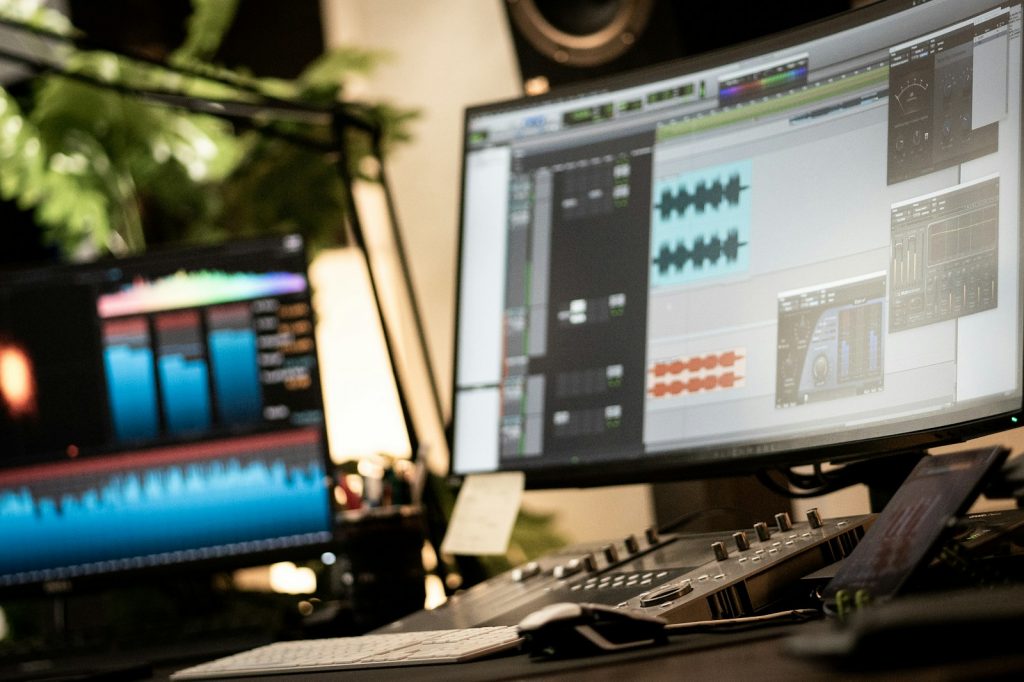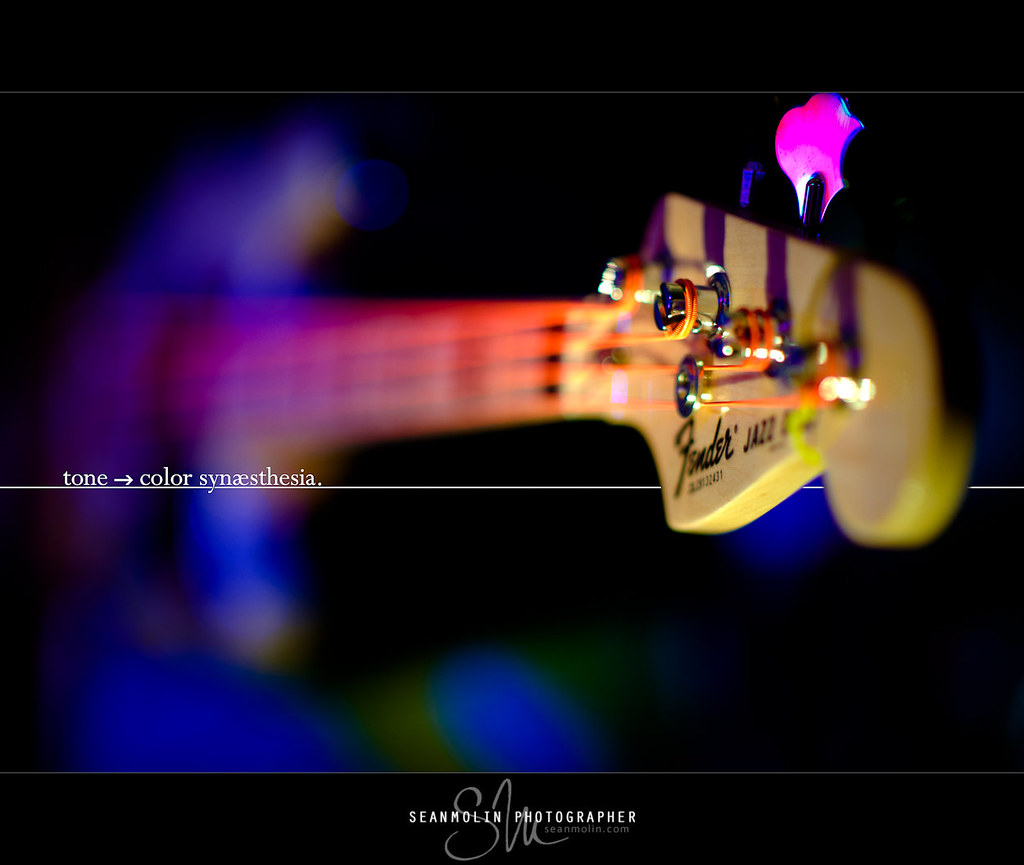Ever wonder why a single note on a guitar sounds completely different from the same note on a piano? Or why a song can make you feel happy, sad, or tense without a single lyric? The answer lies in one word: tone.
Tone is the soul of music. It’s the secret ingredient that gives music its color, emotion, and unique identity. This guide will break down everything you need to know about tone, from basic theory to advanced production tricks, complete with clear examples you can listen for.
What Is Tone in Music? It’s Not Just One Thing.
The word “tone” can mean a few different things in music, which can be confusing. Let’s clear it up:
- Tone as Sound Quality: This is the most common meaning. It’s what makes a violin sound different from a flute, even when they play the same note. Words like warm, bright, harsh, smooth, or mellow all describe this type of tone.
- Tone as a Distance (Interval): This is a theory term. A “whole tone” is the distance between two notes, like from C to D or from E to F#. It’s two steps on the piano. A smaller distance, like from E to F, is called a semitone.
- Tone as Emotion: Tone describes the overall mood of a piece of music. Adele’s “Someone Like You” has a sad, melancholic tone, while Pharrell Williams’ “Happy” has a joyful, upbeat tone.
The Four Building Blocks of Tone (Sound Quality)
Think of a musical sound like a person’s voice. Pitch is how high or low the voice is. Timbre is the unique quality that lets you tell who is speaking. Dynamics are how loud or quiet they are. Articulation is how they pronounce their words.
1. Pitch: The Highs and Lows
Pitch is how high or low a note sounds.
- Example: A mouse’s squeak is a high-pitched sound. A rumbling truck engine is a low-pitched sound.
- In Music: Melodies are made of different pitches. High pitches can create excitement or tension, while low pitches can feel calm or ominous.
2. Timbre: The Unique Voice (The MVP of Tone)
Timbre (pronounced “TAM-ber”) is why you can instantly tell a piano from a guitar. It’s the sonic fingerprint of an instrument or voice.
- Example: Play a middle C on a piano. Now play the same note on an electric guitar with a clean sound. The pitch is the same, but the timbre is completely different.
- What affects it? The instrument’s material (wood, brass, string), how the sound is made (blown, plucked, bowed), and the shape of the instrument all create its unique timbre.
3. Dynamics: Volume as an Emotion Tool
Dynamics are simply how loud or soft the music is.
- Example: A whisper can feel intimate and secretive (piano), while a shout commands attention and can express anger or joy (forte).
- In Music: A symphony that builds from a soft rumble to a loud, crashing climax uses dynamics to create drama and emotion.
4. Articulation: How You Play the Note
Articulation is how a musician starts and ends a note.
- Staccato (Short and Detached): Sounds playful or nervous. Think of the plucked string sound in the main theme from Mission: Impossible.
- Legato (Smooth and Connected): Sounds flowing and lyrical. Think of a singer holding long, smooth notes in a powerful ballad.
How Tone Works in Music Theory (Intervals)
Scales and Modes
The concept of tone is central to the construction of scales and modes. Here’s how:
Major and Minor Scales
- Major Scale: As mentioned above, the major scale is built using a specific pattern of tones and semitones. This pattern gives the major scale its bright, happy sound.
- Natural Minor Scale: The pattern is Tone-Semitone-Tone-Tone-Semitone-Tone-Tone (T-S-T-T-S-T-T), which creates a darker, more melancholic tone.
Modes
Modes are variations of the major scale, each with its own unique pattern of tones and semitones. For example:
- Dorian Mode: T-S-T-T-T-S-T (a minor scale with a raised 6th).
- Mixolydian Mode: T-T-S-T-T-S-T (a major scale with a lowered 7th).
Each mode has a distinct tonal character, making them useful for creating specific moods in your compositions.
Tip for Composers: Experiment with modes to add variety to your music. For example, the Dorian mode is often used in jazz and film scores for its mysterious, yet uplifting tone.
Harmony (Emotion)
Harmony is built on the relationship between tones. Here’s how tone plays a role:
Consonance and Dissonance
- Consonant intervals (e.g., perfect fifths, major thirds) have a stable, pleasing tone.
- Dissonant intervals (e.g., minor seconds, tritones) create tension and are often resolved to consonant intervals.
Practical Application:
- Use consonant intervals for harmonious, relaxing passages.
- Use dissonant intervals to create tension or drama, then resolve them for emotional impact.
Chord Tones vs. Non-Chord Tones
- Chord Tones: Notes that belong to the current chord (e.g., C, E, and G in a C major chord). These create a stable, harmonious tone.
- Non-Chord Tones: Notes outside the current chord (e.g., passing tones, suspensions). These add movement and interest to your music.
Tip for Songwriters: Use non-chord tones sparingly to add complexity without overwhelming the listener.
Tuning Systems
The way tones are tuned can dramatically affect the sound of your music. Here are two key tuning systems:
Equal Temperament
- The most common tuning system in Western music.
- Divides the octave into 12 equal semitones.
- Allows instruments to play in any key without retuning.
Just Intonation
- Tunes intervals based on simple whole-number ratios.
- Produces purer, more resonant tones but is less flexible for modulation.
Practical Application:
- Equal temperament is ideal for pianos and most modern music.
- Just intonation is often used in vocal music and early music ensembles for its pure, harmonious tone.
Tone Rows and Serialism
In 20th-century music, composers like Arnold Schoenberg developed the 12-tone technique, which treats all 12 notes of the chromatic scale as equal. A tone row is a specific arrangement of these 12 tones, which serves as the basis for a composition.
Example:
- A tone row might be: C, D#, G, A, F, E, G#, B, C#, D, F#, A#.
- This row can be transposed, inverted, or reversed to create variations.
Practical Application:
- While 12-tone music is often atonal (lacking a tonal center), it can be a fascinating way to explore new sounds and break free from traditional harmonic rules.
Tone and Microtonality
Microtonality involves using intervals smaller than a semitone, such as quarter tones. This expands the range of available tones and can create unique, otherworldly sounds.
Example:
- Middle Eastern and Indian music often use microtones to create intricate melodic patterns.
Tip for Composers: Experiment with microtonal plugins or instruments to add exotic flavors to your music.
Musical Texture
Tone also plays a role in musical texture, which refers to how melodies, harmonies, and rhythms are combined. For example:
- Monophonic Texture: A single melodic line with no harmony. The tone is pure and unadorned.
- Polyphonic Texture: Multiple independent melodies. The interplay of tones creates complexity.
- Homophonic Texture: A melody with harmonic accompaniment. The tone is rich and full.
Practical Application:
- Use texture to shape the tone of your compositions. For example, a sparse monophonic texture can create intimacy, while a dense polyphonic texture can evoke grandeur.
Tone and Dynamics
Dynamics (volume) also affect tone. For example:
- Forte (loud): Creates a bold, powerful tone.
- Piano (soft): Creates a delicate, intimate tone.
Tip for Pianists: Use dynamics to bring out the emotional tone of a piece. For example, play softly during a melancholic passage and loudly during a triumphant section.
Shaping Tone in Production and Songwriting

Choosing the Right Instrument
The instrument you pick is your first big decision.
- Want an organic, warm feel? Use real instruments like a cello or a grand piano.
- Want a modern, electronic feel? Use synthesizers to create huge bass tones or shimmering pads.
- Pro Tip: Layer sounds! A common trick is to layer a real string section with a synth string patch to make it sound both organic and huge.
Using Effects to Create Space and Character
Effects are a producer’s best friend for crafting tone.
- Reverb: Makes it sound like the music is in a specific space—a small room, a large concert hall, or a massive canyon. Example: The vocals in “Running Up That Hill” by Kate Bush have a huge, spacious reverb that makes them sound powerful and ethereal.
- Delay (Echo): Creates repeats of a sound. Can be used for a rhythmic slap or a long, trailing echo.
- Distortion/Saturation: Adds grit, warmth, and aggression. It makes sounds feel “hot” and driven. Example: The electric guitar in “Smoke on the Water” by Deep Purple. Without distortion, it would be a clean, weak sound.
- EQ (Equalization): The most important tool. It’s like a tone control for your entire mix. You can boost the bass to make something sound warmer, or boost the treble to make it sound brighter.
How to Train Your Ears: Practical Exercises
- Active Listening: Pick one of your favorite songs and listen to it again. But this time, focus on just one thing: Listen for Dynamics: Where does it get louder or quieter? How does that change the feeling? Listen for Timbre: Can you pick out each instrument? How does the singer’s voice sound different from others?
- Mood and Scale: Go to a piano or keyboard (even a free app will work). Play a C Major scale (all white notes from C to C). Now play a C Minor scale (C, D, Eb, F, G, Ab, Bb, C). Feel the emotional difference?
- Experiment with Effects: If you have a DAW (like GarageBand, FL Studio, etc.), take a simple synth sound and add different effects. Hear what reverb, delay, and distortion do to change its character completely.
Conclusion: Your Tone is Your Signature
Understanding tone is one of the key elements for creating and appreciating music. It’s the difference between just playing notes and making people feel something. It lives in the theoretical patterns of a scale, the unique voice of an instrument, the emotional swell of a dynamic change, and the digital precision of a producer’s EQ. Now that you know what to listen for, you’ll hear the world of music in a whole new, more vibrant way.








